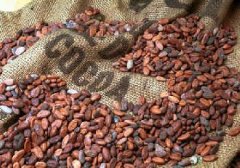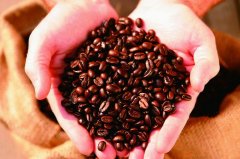The aroma of coffee is determined by the roasting process and can be subdivided into eight stages according to the degree of frying.

Frying determines the aroma of coffee to fry raw coffee beans, which can show the unique color, taste and aroma of coffee. 80% of the taste of coffee is determined by frying, so the quality of coffee also depends on frying technology. Through frying, we can turn the light green raw coffee beans into the familiar tea-brown coffee beans. If fried well, the coffee beans will have a very fragrant, sour and bitter taste. The key to frying is to stir-fry the coffee beans from the outside to the inside. First of all, the water of raw beans will be fully dried with fire, at this time, if you use a quick fire, it will cause uneven baking, making the coffee astringent and irritating to the throat. Fried coffee beans will swell, there are no wrinkles on the surface, the luster is uniform, and each bean has a good taste. To maximize the personality of coffee beans, stir-frying beans is the key. The types and stages of fried coffee beans can be divided into three categories: shallow fried, medium fried and deep fried. Shallow fried coffee beans have a unique and strong sour taste, aroma; deep fried sour taste will be lost, resulting in bitter, fragrant and scorched aroma. According to the degree of frying, it can be subdivided into 8 stages: 1. Shallow baking.
2. Cinnamon
3. Medium baking
4. High baking
5. City baking
6. City-wide baking
7. French baking
Italian style baking different cities in the world have different frying tendencies in different parts of the world. Tokyo, Japan tends to deep-fry (high baking), and Kansai region of Japan tends to deep-fry.
New York, the United States, generally likes city baking, but because New Zealand is home to many people from different countries and regions, it sells all kinds of fried coffee with a wide variety of varieties.
Viennese like to roast coffee all over the city. In recent years, European countries are more and more inclined to deep-fried coffee. Steam pressurized coffee brewing is still popular. (this article is reprinted)
Important Notice :
前街咖啡 FrontStreet Coffee has moved to new addredd:
FrontStreet Coffee Address: 315,Donghua East Road,GuangZhou
Tel:020 38364473
- Prev

Basic knowledge of coffee roasting coffee roasting methods and principles [Figure]
Roast raw coffee beans to give them a distinctive color, aroma and taste. The most important thing about roasting is that it can evenly fry the inside and outside of the beans without burning them. 80% of coffee taste depends on roasting, which is the most important and basic condition for brewing good coffee. The most important thing is to be able to fry the inside and outside of the beans evenly. first
- Next

Several problems that should be paid attention to in coffee roasting how to solve the insufficient preheating temperature of the oven?
In order to do a good job in baking, every production link can not be ignored, the selection of materials should be fastidious, the weighing of materials should be accurate, and the operation should be careful. Baking is a science. To understand the principle of baking, we must first understand the three ways of heat conduction, convection and radiation. Conduction refers to when the heat is transmitted by the heat source, causing the surrounding molecules to vibrate and release heat, gradually moving from the high temperature to the low temperature. The transmission of stainless steel
Related
- Beginners will see the "Coffee pull flower" guide!
- What is the difference between ice blog purified milk and ordinary milk coffee?
- Why is the Philippines the largest producer of crops in Liberia?
- For coffee extraction, should the fine powder be retained?
- How does extracted espresso fill pressed powder? How much strength does it take to press the powder?
- How to make jasmine cold extract coffee? Is the jasmine + latte good?
- Will this little toy really make the coffee taste better? How does Lily Drip affect coffee extraction?
- Will the action of slapping the filter cup also affect coffee extraction?
- What's the difference between powder-to-water ratio and powder-to-liquid ratio?
- What is the Ethiopian local species? What does it have to do with Heirloom native species?

